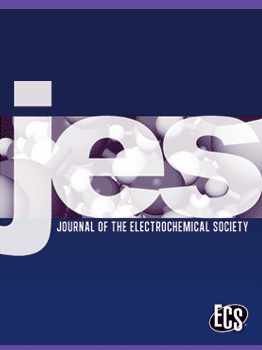
Norman Hackerman was an American chemist, professor, and academic administrator who served as the 18th President of the University of Texas at Austin (1967–1970) and later as the 4th President of Rice University (1970–1985). He was an internationally known expert in metal corrosion.

Gordon Earle Moore was an American businessman, engineer, and the co-founder and emeritus chairman of Intel Corporation. He proposed Moore's law, the observation that the number of transistors in an integrated circuit (IC) doubles about every two years.

John Bannister Goodenough is an American materials scientist, a solid-state physicist, and a Nobel laureate in chemistry. He is a professor of Mechanical, Materials Science, and Electrical Engineering at the University of Texas at Austin. He is widely credited with the identification and development of the lithium-ion battery, for developing the Goodenough–Kanamori rules in determining the sign of the magnetic superexchange in materials, and for seminal developments in computer random-access memory.

Isamu Akasaki was a Japanese engineer and physicist, specializing in the field of semiconductor technology and Nobel Prize laureate, best known for inventing the bright gallium nitride (GaN) p-n junction blue LED in 1989 and subsequently the high-brightness GaN blue LED as well.

The IEEE John von Neumann Medal was established by the IEEE Board of Directors in 1990 and may be presented annually "for outstanding achievements in computer-related science and technology." The achievements may be theoretical, technological, or entrepreneurial, and need not have been made immediately prior to the date of the award.
The Electrochemical Society is a learned society based in the United States that supports scientific inquiry in the field of electrochemistry and solid-state science and related technology. The Society membership comprises more than 8,000 scientists and engineers in over 85 countries at all degree levels and in all fields of electrochemistry, solid state science and related technologies. Additional support is provided by institutional members including corporations and laboratories.

Joseph Wang is an American biomedical engineer and inventor. He is a Distinguished Professor, SAIC Endowed Chair, and former Chair of the Department of Nanoengineering at the University of California, San Diego, who specialised in nanomachines, biosensors, nano-bioelectronics, wearable devices, and electrochemistry. He is also the Director of the UCSD Center of Wearable Sensors and co-director of the UCSD Center of Mobile Health Systems and Applications (CMSA).
The IEEE Dennis J. Picard Medal for Radar Technologies and Applications is an award presented for outstanding accomplishments in advancing the fields of radar technologies and their applications. This award can be presented to an individual or group of up to three people.
Jerry Woodall is an American inventor and scientist best known for his invention of the first commercially viable heterojunction material GaAlAs for red LEDs used in automobile brake lights and traffic lights, CD and DVD players, TV remote controls and computer networks. He is a recipient of US National Medal of Technology and Innovation for "his pioneering role in the research and development of compound semiconductor materials and devices..."

The Journal of the Electrochemical Society is a monthly peer-reviewed scientific journal covering the field of electrochemical science and technology. It is published by the Electrochemical Society. According to the Journal Citation Reports, the journal has a 2020 impact factor of 4.316.
Herbert Henry Uhlig was an American physical chemist who studied corrosion.

David J. Lockwood is a Canadian physicist and researcher emeritus at the National Research Council of Canada (NRC). He is also an adjunct professor at the University of Windsor in Windsor, Ontario, editor of the journal Solid State Communications, editor of the Springer book series "Topics in Applied Physics", and secretary-treasurer of the Canadian Association of Physicists. Lockwood is a Fellow of the Royal Society of Canada, the American Physical Society, the Electrochemical Society, and the Institute of Physics.

ECS Solid State Letters (SSL) is a peer-reviewed scientific journal covering the field of solid state science and technology. The journal was established in 2012 and is published by the Electrochemical Society. SSL ceased publication at the end of 2015. The editor-in-chief was Dennis W. Hess. According to the Journal Citation Reports, the journal has a 2014 impact factor of 1.162.

The Edward Goodrich Acheson Award was established by The Electrochemical Society (ECS) in 1928 to honor the memory of Edward Goodrich Acheson, a charter member of ECS. The award is presented every 2 years for "conspicuous contribution to the advancement of the objectives, purposes, and activities of the society (ECS)".

Kuzhikalail M. Abraham is an American scientist, a recognized expert on lithium-ion and lithium-ion polymer batteries and is the inventor of the ultrahigh energy density lithium–air battery. Abraham is the principal of E-KEM Sciences in Needham, Massachusetts and a professor at the Northeastern University Center for Renewable Energy Technologies, Northeastern University, in Boston, Massachusetts.
The Olin Palladium Award was established by The Electrochemical Society (ECS) in 1950 and is presented every 2 years to recognize outstanding contributions to the fundamental understanding of all types of electrochemical and corrosion phenomena and processes.
The Norman Hackerman Young Author Award was established in 1982 by The Electrochemical Society (ECS). The award is presented annually for the best paper published in the Journal of the Electrochemical Society for a topic in the field of electrochemical science and technology by a young author or authors.

Doron Aurbach is an Israeli electrochemist, materials and surface scientist.












